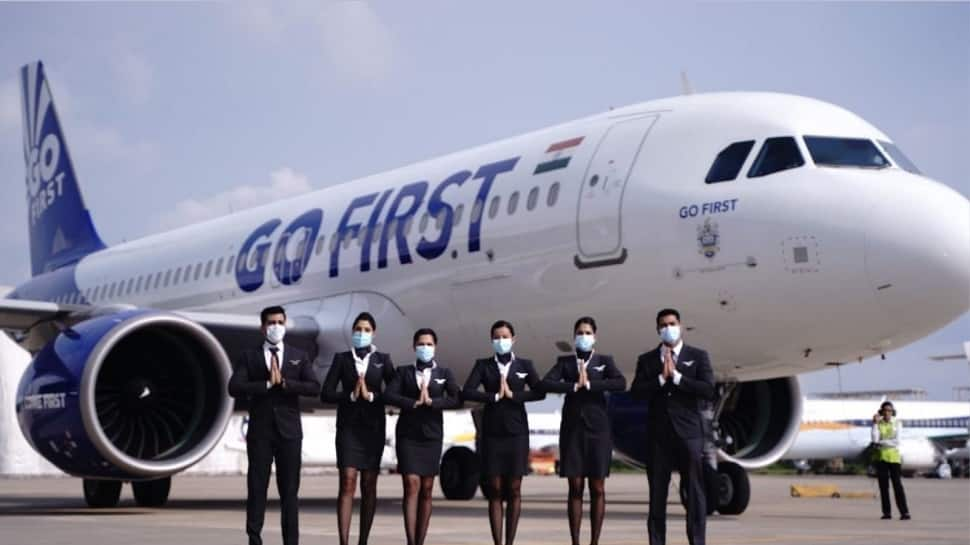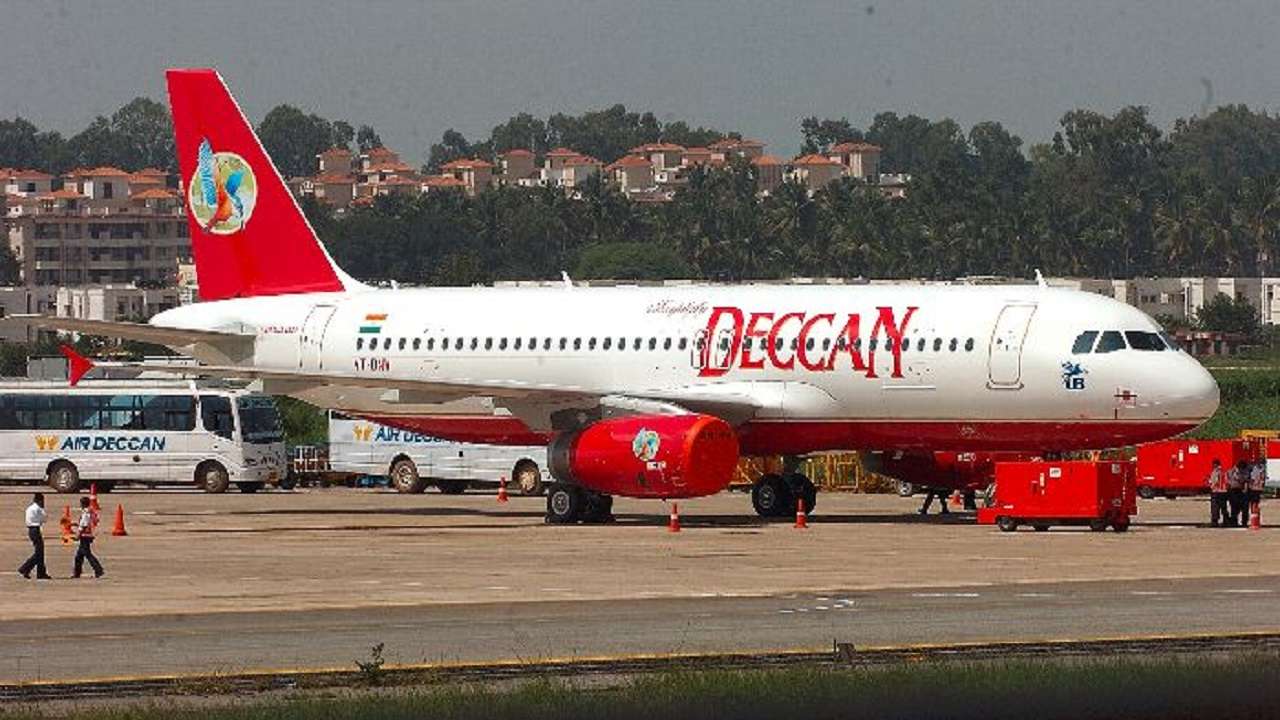Go First Airline Files For Bankruptcy ; 4 Other Airlines Who Has Filed For Bankruptcy In The Past
Go First Airline is suffering from cash deficiency which resulted in facing huge financial turbulence, causing it to file for bankruptcy. but Go First is not the first Airline to file for Bankruptcy ; over the years a number of airlines has filed for bankruptcy over several reasons , read the article to know more.

In recent years, Go First Airline (formerly known as GoAir) has emerged as a prominent player in the Indian aviation sector. But recently it has filed for bankruptcy. It started its operations in 2005 as a low-cost carrier, emphasizing punctuality, affordability, and consistency. Over the years, it has expanded its fleet, network, and services, catering to both domestic and international passengers.

It has been noted that the airline is suffering from cash deficiency which resulted in facing huge financial turbulence, causing it to file for bankruptcy. The low-cost transport criticized Pratt & Whitney engines for the grounding of approximately half its line, heading to terrible financial suffering.
In an impact statement, Go First Airlines, owned by Wadia-group, announced it is terminating all its flying for two days (May 3 and 4) given the fund scarcity. The decision outraged the airline’s passengers who had prearranged tickets for their planned destination.
Go First Airline filing for Bankruptcy
go first claims that the reason for their bankruptcy was not due to insufficient funds or any mismanagement but rather an ‘engine issue’. The Wadia group has blamed US engine maker Pratt and Whitney for grounding planes due to an increasing number of failing engines which was supplied by them and this leads to major cash flow problems, says the Wadia group.
Go First claims that they were forced to ground 25 aircraft – about half of its Airbus A320neo planes – which leads to about 108bn rupees ($1.3bn; £1bn) in losing revenue and expenses. The aviation analytics firm Cirium conveys how Go First was lined up to operate 6,225 flights in May, estimated to have over 1.1 million seats.
The airline charged Pratt & Whitney for not following the order by an emergency arbitrator, which includes supplying “at least 10 serviceable spare leased engines by 27 April 2023”.
In response to all the allegations claimed by the Airline and the Wadia group Pratt & Whitney the US engine maker responded that it was “complying with the March 2023 arbitration ruling” and it could not comment further as “this is now a matter of litigation”.
The company declared openly that it has filed for bankruptcy proceedings with the National Company Law Tribunal. In its filing, the company stated that Pratt & Whitney refused to release engine orders making it difficult for them to operate half of the fleet, said CEO Kaushik Khona. Pratt & Whitney is the sole supplier of engines for the Airbus A320neo aircraft fleet operated by Go First.
However, Go First isn’t the first airline to file bankruptcy, as it had to face several competitors who tried and failed to conquer the market. Let us examine some of these failed airlines and the reason behind their downfall.

- Kingfisher Airlines
Once touted as the “King of Good Times,” Kingfisher Airlines was one of the biggest and most luxurious airlines in India. It was founded by flamboyant businessman Vijay Mallya in 2005 and aimed to provide a world-class experience to its customers through plush interiors, gourmet cuisine, and personalized service.
However, Kingfisher Airlines soon ran into financial troubles, accumulating massive debts, and failing to pay its employees and creditors. It eventually stopped its operations in 2012, leaving thousands of passengers stranded and causing significant losses to its stakeholders.
The reasons for the airline’s failure are attributed to a combination of factors such as aggressive expansion, poor management, high costs, fierce competition, and a sluggish economy.

- Jet Airways
Jet Airways was another prominent airline in India, founded in 1993 by Naresh Goyal. It grew rapidly and became a dominant player in the market, with a wide network of domestic and international destinations, modern aircraft, and excellent service.
However, Jet Airways had its share of challenges, including fierce competition from low-cost carriers such as Indigo and SpiceJet, high fuel prices, and regulatory hurdles.
Additionally, the airline’s financial position deteriorated due to massive debts, operational losses, and delayed payments to its employees and vendors. In 2019, Jet Airways had to suspend its operations, leaving thousands of passengers stranded and causing a wave of layoffs and bankruptcies in the aviation industry.

- Air Deccan
Air Deccan was a pioneering airline in India that aimed to make flying affordable and accessible to millions of people who had never flown before. It was founded in 2003 by Captain Gopinath, who envisioned an airline that would cater to both urban and rural customers and connect small towns and cities across India.
Air Deccan initially operated with a single turboprop aircraft and gradually expanded its fleet and routes. However, the airline’s business model was not sustainable in the long run, as it relied heavily on low fares and high volumes, which put pressure on its profitability.
Moreover, Air Deccan faced operational and logistical challenges, such as delays, cancellations, and inadequate infrastructure, which affected its reputation and customer loyalty. In 2007, Air Deccan merged with Kingfisher Airlines, but the latter also met with financial troubles, leading to the closure of both airlines

- Paramount Airways
Paramount Airways was a regional airline based in Chennai that focused on providing premium services to business travelers. It started its operations in 2005 and quickly gained a reputation for its luxurious interiors, reclining seats, and personalized service.
However, Paramount Airways struggled to compete with other low-cost carriers such as SpiceJet and Indigo, which offered similar services at lower fares. Additionally, Paramount Airways faced operational and financial difficulties, including aircraft maintenance issues, high costs, regulatory hurdles, and a sluggish economy. In 2010, the airline suspended its operations, citing financial losses and debt burdens.

The Indian aviation sector has witnessed numerous ups and downs over the years, with several airlines entering and exiting the market. While some airlines have managed to survive and thrive, others have failed over various factors such as fierce competition, high costs, poor management, regulatory hurdles, and economic downturns. Go First is not the first one to declare bankruptcy.
But it is important to notice how most Airlines are falling into the trap of mismanagement, and it’s something extremely hard to recover from, not only it stresses the company and Airlines but also the staff working for these companies face turbulence to save their job not to mention the customers who have booked and planned their flights according to their needs are now suffering due to lack of management.
The aviation climate is extremely competitive with insufficient funds, poor management systems, lack of sound business strategy, cost management, and inconsistent customer satisfaction have failed these airlines. It’s important to note what is going to be the next steps to Go First and also for the other existing airlines.
Proofread & Published by Naveenika Chauhan




